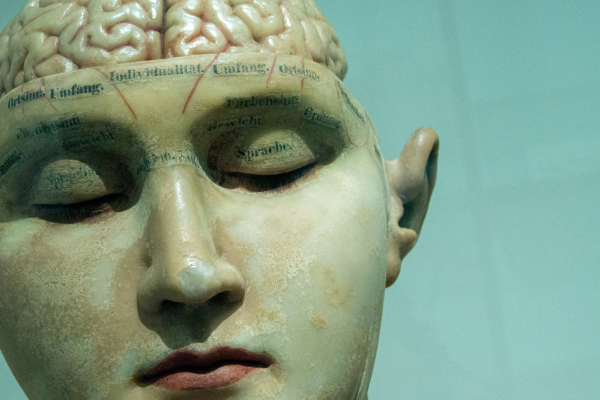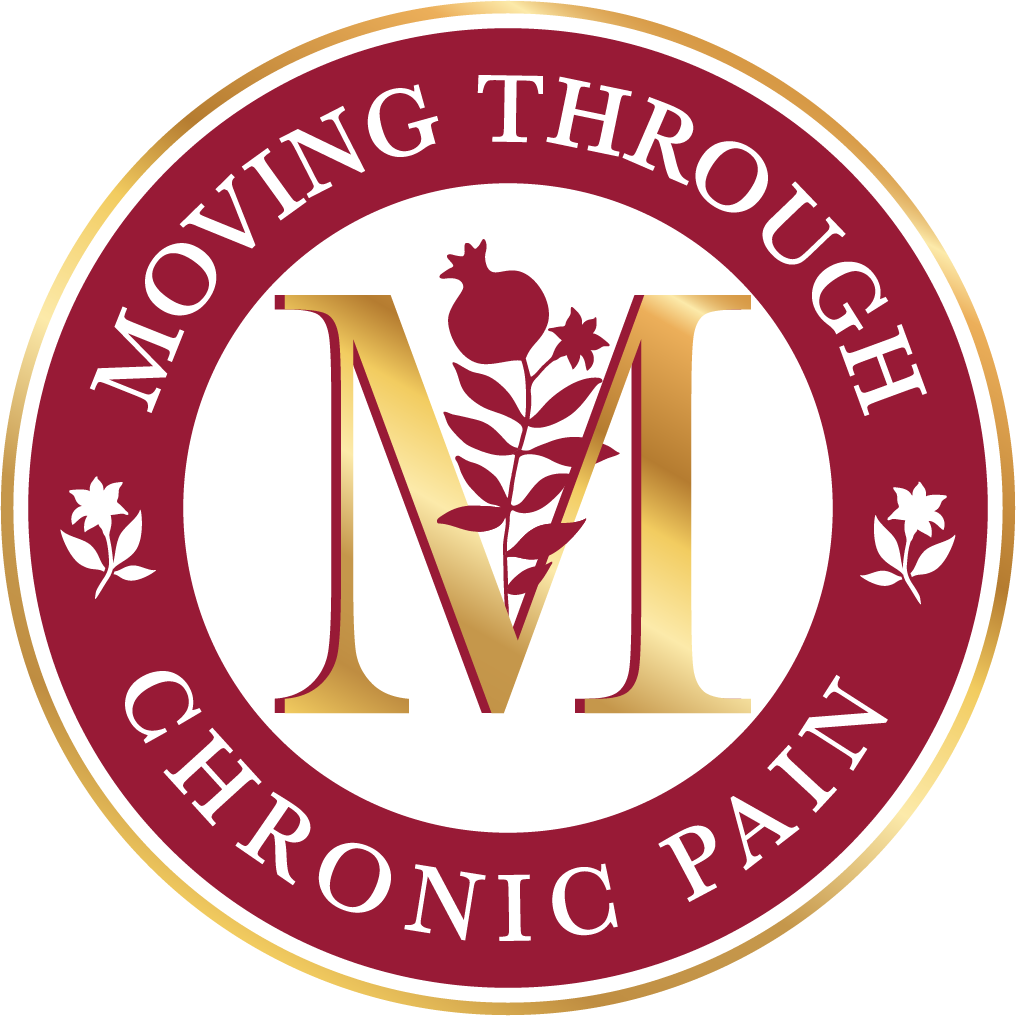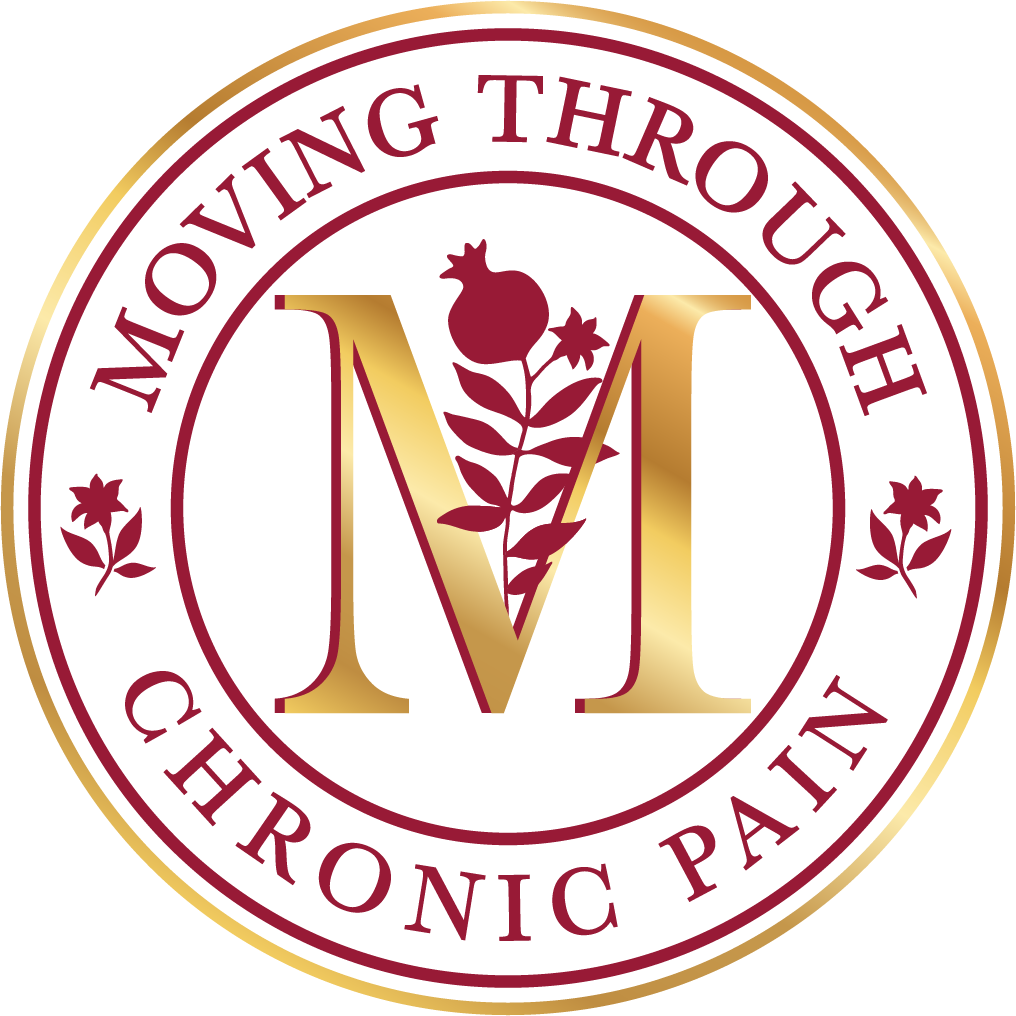HELPING MAKE YOUR CHRONIC PAIN JOURNEY EASIER
The pain cHronic•les
LATEST BLOG ARTICLES

Chronic pain is a complex and often misunderstood condition that affects millions of people around the world. It's important to note that every individual's experience with chronic pain can be unique, and what works for one person may not necessarily work for another. I’ll will be providing some insights into the causes, mechanisms, and challenges of chronic pain based on my personal experience in the hopes that it will help make your chronic pain journey easier.

Michelle Marikos, Founder & CEO
Moving Through Chronic Pain

All In Your Head
HELPING MAKE YOUR CHRONIC PAIN JOURNEY EASIER
HOW CAN WE BREAK THE STIGMA OF "PAIN IS ALL IN YOUR HEAD"?


Embracing the mind's role in chronic pain
It is unfortunately not uncommon for people in pain to be told by others (family, colleagues or healthcare professionals) that their pain must be ‘all in the mind’, ‘psychosomatic’ or ‘all in your head’. I have lost count of the number of times I have been told this, and I will admit that in the past, I have reacted badly when I hear it. Are people trying to undermine the reality of my suffering? Don’t they believe that when I say I am in pain, I actually am? Are they trying to invalidate my experience?
Chronic pain does not mean you are making up your pain. You are not exaggerating your pain. Your pain is unique to you. It is a message from your brain based on its judgment of the threat it is facing. Burning pain, stabbing pain, deep ache, cramping, throbbing and more are all sensations produced by your brain’s construction of events.
Exactly what is happening when have chronic pain?
In chronic pain, the whole nervous system has become sensitized. The pain sensors in your peripheral nervous system ‘misfire’, meaning the neurons become more ‘excitable’ sending more signals to the brain.
Then once the signals reach the brain, the ignition nodes can also become very sensitive, and are repeatedly ‘hijacked’ into what is called a pain neuro tag (particular pattern of activity). It can lead to something usually not painful, such as standing, activating more ignition nodes rather than it usually would, for just being upright. This can be why other stimuli such as changes in noise, light and temperature can lead to a pain response too. If the nervous system is completely sensitized, this is why any tiny noise or movement can be interpreted by the brain as pain.
Understanding that chronic pain is a symptom of a stressed-out nervous system can also help us find ways to soothe that system, and our pain. This is why tools such as mindfulness, yoga, deep breathing, coloring/art therapy, etc are all recommended as pain management tools. They all have the same sense of trying to calm and quieten the nervous system down. It’s a way to tell the body, it’s okay, I am not in danger or harm, we can relax.
Pain is awful. And you 100% are not making it up. I have learnt to stop trying to blame my body for pain, but to try to understand what it is trying to tell me. The more you panic and get upset about pain (which is totally okay sometimes), the more your body will panic and keep saying you’re in pain. If you try to acknowledge your pain, and then do calming distracting activities, this is proven to help lessen pain. Even if your pain feels like it will never pass (it always does, eventually) and you have tried everything. I find just knowing pain is actually your body trying to be nice, trying to look out for you and keep you safe can help you cope with it.
Addressing the ‘all in your head’ stigma
There is a way of thinking that says that if something cannot be explained medically or identified by medical tests then it must be ‘psychological’. The idea is either that the person ‘believes’ that they have pain, but doesn’t really, or that whatever pain they have arises entirely from mental processes and is not ‘real’. It is different from acknowledging that pain and emotional distress or psychological disorders may be related.
But, the fact that current medical knowledge cannot explain something does not mean that a mechanism for the pain will not eventually be discovered leading to effective treatments. If you have been told that your pain is all in the mind, here are four assertive responses you could use:
‘Pain is a mind-body problem. The two can’t be separated.’
‘I’m distressed because of my pain and the problems it causes. Pain causes distress, not the other way round.’
‘I realize it is good news that the investigations [X-ray, scan, blood tests] show nothing serious. But I feel pain because that’s what my nervous system tells my brain and no investigation can show that.’ (Let’s not forget, plenty of acute pains accepted as ‘real’ wouldn’t show up on investigations like that, from headache to muscle cramp to renal colic.)
‘If you had pain like this, and it affected your life like it affects mine, don’t you think you would be worried/distressed/depressed/frustrated?
The language used when describing pain is so important. While ‘It’s all in your head' is accurate to some extent, it has negative implications, implying we want to be in pain, we are exaggerating our pain, or even faking it.
Chronic pain is an invisible illness and carries with it a heavy stigma. We face skepticism or judgment from others who cannot see or fully comprehend the extent of our suffering. This societal bias against chronic pain often leads to resistance to the idea that the brain could be the culprit.
Chronic pain is not purely physical
One common misconception is that chronic pain is purely physical, originating solely from damage in the body. While physical factors can certainly play a role, neuroscience research tells us that most chronic pain is due to neural pathways in the brain. Overlooking the brain’s involvement in pain can hinder effective pain management. It’s crucial to address this resistance and understand that chronic pain is often due to neurological factors.
Chronic pain affects 1 in 5 people around the world, and for many, their agony controls and constrains their lives. Being told that pain is a figment of an overactive imagination is too often a way to dismiss real suffering, but pain researchers know that most pain, and especially chronic pain, is a complex phenomenon that always involves the mind and the body. Acknowledging that connection and destigmatizing the phrase ‘all in your head’ is crucial.
Chronic pain is as much a physical sensation as an emotional experience. Negative emotions like fear, anxiety, and stress can create and exacerbate pain. When you’re anxious or stressed, your body releases stress hormones, which can heighten pain sensitivity. Stress hormones also lead the body to tense up and contract, which can lead to pain over time. Additionally, the emotional toll of living with chronic pain can lead to a vicious cycle where pain triggers negative emotions, and these emotions, in turn, intensify the pain.
This is why understanding the emotional dimension of chronic pain is essential for holistic pain management. Techniques like mindfulness, relaxation, and personalized therapies can help you better cope with the emotional aspects of pain and, in turn, reduce its intensity.
Removing the ‘all in your head’ stigma
Although there is no silver bullet for chronic pain, interventions that focus on helping people live with what hurts them or changes how they feel about pain are a central feature of gold-standard, interdisciplinary pain treatment. Yet for patients to get access to this kind of care, the term ‘all in your head’ needs to be reclaimed and re-defined. Instead of using it to belittle or delegitimize, it should be used to empower.
The interplay between chronic pain and mental health is complex and significant. Many individuals with chronic pain suffer from anxiety and depression, conditions that can be exacerbated by invalidating statements. Anxiety may arise from the fear of not being believed, the unpredictability of pain, and the potential for future suffering. Depression can develop as a result of the constant battle with pain, loss of function, and diminished quality of life. When pain is dismissed as merely psychological, it can intensify these mental health challenges, making it harder for individuals to cope. The lack of validation from others can push individuals further into isolation, severing connections with friends, family, and support systems.
The importance of validation
Validation is a crucial component in breaking this cycle. When healthcare providers, family members, and friends acknowledge and validate the pain experience, it can provide immense relief and support. Validation does not mean agreeing that the pain is purely psychological; rather, it means recognizing the person's suffering as real and significant. This can help to alleviate some of the emotional burdens, and foster a sense of hope and resilience.
Moving forward with compassion
It may be a stretch to expert the phrase ‘the pain is all in your head’ to be retired from our vocabulary. Instead, let us embrace a more holistic and compassionate approach to understanding and managing chronic pain.
If you are experiencing pain, it is always real. Chronic pain is not imagined, but it is in your head because it often originates in the brain. Rather than seeing chronic pain as solely residing in the body, we must acknowledge the brain’s profound influence. By doing so, we open new avenues for treatment and a more compassionate understanding of those of us living with chronic pain.
Empathy and validation can transform the lives of those living with chronic pain. Let’s commit to understanding and supporting each other on this journey.
#chronicpain #understandingpain #painawareness #peersforpain #invisibleillness #mindfulness #stigma
Michelle Marikos’ fall from a balcony in her early twenties, and her subsequent decades long debilitating chronic pain, inspired her to launch Moving Through Chronic Pain and her PEER™ Method programs to facilitate deeper connections between those living with chronic pain and their community of providers, employers, and family members.

Michelle Marikos, Founder & CEO
Moving Through Chronic Pain

All In Your Head
HELPING MAKE YOUR CHRONIC PAIN JOURNEY EASIER
HOW CAN WE BREAK THE STIGMA OF "PAIN IS ALL IN YOUR HEAD"?


Embracing the mind's role in chronic pain
It is unfortunately not uncommon for people in pain to be told by others (family, colleagues or healthcare professionals) that their pain must be ‘all in the mind’, ‘psychosomatic’ or ‘all in your head’. I have lost count of the number of times I have been told this, and I will admit that in the past, I have reacted badly when I hear it. Are people trying to undermine the reality of my suffering? Don’t they believe that when I say I am in pain, I actually am? Are they trying to invalidate my experience?
Chronic pain does not mean you are making up your pain. You are not exaggerating your pain. Your pain is unique to you. It is a message from your brain based on its judgment of the threat it is facing. Burning pain, stabbing pain, deep ache, cramping, throbbing and more are all sensations produced by your brain’s construction of events.
Exactly what is happening when have chronic pain?
In chronic pain, the whole nervous system has become sensitized. The pain sensors in your peripheral nervous system ‘misfire’, meaning the neurons become more ‘excitable’ sending more signals to the brain.
Then once the signals reach the brain, the ignition nodes can also become very sensitive, and are repeatedly ‘hijacked’ into what is called a pain neuro tag (particular pattern of activity). It can lead to something usually not painful, such as standing, activating more ignition nodes rather than it usually would, for just being upright. This can be why other stimuli such as changes in noise, light and temperature can lead to a pain response too. If the nervous system is completely sensitized, this is why any tiny noise or movement can be interpreted by the brain as pain.
Understanding that chronic pain is a symptom of a stressed-out nervous system can also help us find ways to soothe that system, and our pain. This is why tools such as mindfulness, yoga, deep breathing, coloring/art therapy, etc are all recommended as pain management tools. They all have the same sense of trying to calm and quieten the nervous system down. It’s a way to tell the body, it’s okay, I am not in danger or harm, we can relax.
Pain is awful. And you 100% are not making it up. I have learnt to stop trying to blame my body for pain, but to try to understand what it is trying to tell me. The more you panic and get upset about pain (which is totally okay sometimes), the more your body will panic and keep saying you’re in pain. If you try to acknowledge your pain, and then do calming distracting activities, this is proven to help lessen pain. Even if your pain feels like it will never pass (it always does, eventually) and you have tried everything. I find just knowing pain is actually your body trying to be nice, trying to look out for you and keep you safe can help you cope with it.
Addressing the ‘all in your head’ stigma
There is a way of thinking that says that if something cannot be explained medically or identified by medical tests then it must be ‘psychological’. The idea is either that the person ‘believes’ that they have pain, but doesn’t really, or that whatever pain they have arises entirely from mental processes and is not ‘real’. It is different from acknowledging that pain and emotional distress or psychological disorders may be related.
But, the fact that current medical knowledge cannot explain something does not mean that a mechanism for the pain will not eventually be discovered leading to effective treatments. If you have been told that your pain is all in the mind, here are four assertive responses you could use:
‘Pain is a mind-body problem. The two can’t be separated.’
‘I’m distressed because of my pain and the problems it causes. Pain causes distress, not the other way round.’
‘I realize it is good news that the investigations [X-ray, scan, blood tests] show nothing serious. But I feel pain because that’s what my nervous system tells my brain and no investigation can show that.’ (Let’s not forget, plenty of acute pains accepted as ‘real’ wouldn’t show up on investigations like that, from headache to muscle cramp to renal colic.)
‘If you had pain like this, and it affected your life like it affects mine, don’t you think you would be worried/distressed/depressed/frustrated?
The language used when describing pain is so important. While ‘It’s all in your head' is accurate to some extent, it has negative implications, implying we want to be in pain, we are exaggerating our pain, or even faking it.
Chronic pain is an invisible illness and carries with it a heavy stigma. We face skepticism or judgment from others who cannot see or fully comprehend the extent of our suffering. This societal bias against chronic pain often leads to resistance to the idea that the brain could be the culprit.
Chronic pain is not purely physical
One common misconception is that chronic pain is purely physical, originating solely from damage in the body. While physical factors can certainly play a role, neuroscience research tells us that most chronic pain is due to neural pathways in the brain. Overlooking the brain’s involvement in pain can hinder effective pain management. It’s crucial to address this resistance and understand that chronic pain is often due to neurological factors.
Chronic pain affects 1 in 5 people around the world, and for many, their agony controls and constrains their lives. Being told that pain is a figment of an overactive imagination is too often a way to dismiss real suffering, but pain researchers know that most pain, and especially chronic pain, is a complex phenomenon that always involves the mind and the body. Acknowledging that connection and destigmatizing the phrase ‘all in your head’ is crucial.
Chronic pain is as much a physical sensation as an emotional experience. Negative emotions like fear, anxiety, and stress can create and exacerbate pain. When you’re anxious or stressed, your body releases stress hormones, which can heighten pain sensitivity. Stress hormones also lead the body to tense up and contract, which can lead to pain over time. Additionally, the emotional toll of living with chronic pain can lead to a vicious cycle where pain triggers negative emotions, and these emotions, in turn, intensify the pain.
This is why understanding the emotional dimension of chronic pain is essential for holistic pain management. Techniques like mindfulness, relaxation, and personalized therapies can help you better cope with the emotional aspects of pain and, in turn, reduce its intensity.
Removing the ‘all in your head’ stigma
Although there is no silver bullet for chronic pain, interventions that focus on helping people live with what hurts them or changes how they feel about pain are a central feature of gold-standard, interdisciplinary pain treatment. Yet for patients to get access to this kind of care, the term ‘all in your head’ needs to be reclaimed and re-defined. Instead of using it to belittle or delegitimize, it should be used to empower.
The interplay between chronic pain and mental health is complex and significant. Many individuals with chronic pain suffer from anxiety and depression, conditions that can be exacerbated by invalidating statements. Anxiety may arise from the fear of not being believed, the unpredictability of pain, and the potential for future suffering. Depression can develop as a result of the constant battle with pain, loss of function, and diminished quality of life. When pain is dismissed as merely psychological, it can intensify these mental health challenges, making it harder for individuals to cope. The lack of validation from others can push individuals further into isolation, severing connections with friends, family, and support systems.
The importance of validation
Validation is a crucial component in breaking this cycle. When healthcare providers, family members, and friends acknowledge and validate the pain experience, it can provide immense relief and support. Validation does not mean agreeing that the pain is purely psychological; rather, it means recognizing the person's suffering as real and significant. This can help to alleviate some of the emotional burdens, and foster a sense of hope and resilience.
Moving forward with compassion
It may be a stretch to expert the phrase ‘the pain is all in your head’ to be retired from our vocabulary. Instead, let us embrace a more holistic and compassionate approach to understanding and managing chronic pain.
If you are experiencing pain, it is always real. Chronic pain is not imagined, but it is in your head because it often originates in the brain. Rather than seeing chronic pain as solely residing in the body, we must acknowledge the brain’s profound influence. By doing so, we open new avenues for treatment and a more compassionate understanding of those of us living with chronic pain.
Empathy and validation can transform the lives of those living with chronic pain. Let’s commit to understanding and supporting each other on this journey.
#chronicpain #understandingpain #painawareness #peersforpain #invisibleillness #mindfulness #stigma
Michelle Marikos’ fall from a balcony in her early twenties, and her subsequent decades long debilitating chronic pain, inspired her to launch Moving Through Chronic Pain and her PEER™ Method programs to facilitate deeper connections between those living with chronic pain and their community of providers, employers, and family members.

Michelle Marikos, Founder & CEO
Moving Through Chronic Pain

